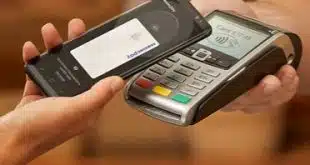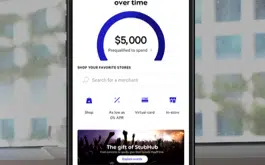In the wake of strong growth in its mobile-payments business, PayPal Inc. on Tuesday made available an upgraded Android app that includes a widget for person-to-person payments using near-field communication (NFC) technology.
The launch represents the San Jose, Calif.-based e-commerce processor’s first live product based on NFC, a short-range communication protocol that has been adopted by PayPal rival Google Inc. as well as the nation’s biggest wireless carriers in a joint venture called Isis. And while the new widget exploits cloud-based payment credentials for users rather than a secure element in the phone, a PayPal spokesman says the product does not indicate how the company might deploy NFC in the future—or even whether it is committed to NFC. “What we’re not doing is betting the farm on any one technology,” he says.
The “Request Money” feature, part of what is now version 3.0 of the free PayPal Android app, works on any handset that supports NFC and Google Inc.’s Android operating system. That’s a limited range of devices currently, embracing about half a dozen models including the Google Nexus and some versions of the Samsung Galaxy S II.
But the range of available phones could have been even narrower. By deploying the so-called peer-to-peer mode of NFC, PayPal avoids the need for a secure element, a chip embedded in a handset to lock down payment credentials. That widens the range of NFC phones beyond the Nexus device, which has the chip.
To use the widget, one user enters a requested sum of money, then taps his phone on the other user’s device. That transmits the request to the other phone, whose user completes the transaction by entering a password. The service resembles a P2P feature called Bump that PayPal introduced last year to allow users to exchange funds by tapping phones. Unlike NFC, which relies on radio waves to make connections between devices, Bump uses sensors built into smart phones to detect touches. But PayPal says NFC is more streamlined. NFC “is a very fast, reliable connection,” says the spokesman. “NFC in our initial tests does seem to be a little faster than Bump.”
Besides each having an NFC-equipped phone, users of the widget must also each have a PayPal account. Payments are free if funded by the sender’s bank or PayPal account. Fees apply only if the sender funds his transfer with a credit card, the spokesman says.
While PayPal may not be prepared to say its new product shows it is leaning toward cloud-based NFC, some observers argue this is a direction other providers could follow now that PayPal has introduced its widget. “This is a big, big indicator of the future. There will be more [cloud] applications,” says Todd Ablowitz, president of Double Diamond Group LLC, a Centennial, Colo.-based consulting firm. PayPal, meanwhile, is rapidly penetrating the nascent market for mobile transactions. It recently projected it will process $3.5 billion in mobile payments this year, five times the volume it processed in 2010.
The new Android app is in addition to a P2P service PayPal has been selling for the last two years to banks. That application, which is available through banks’ mobile and online banking services, is powered by PayPal and requires recipients to have a PayPal account, but the service is branded by the banks and funds can be linked to card or other accounts recipients have with their bank. Discover Financial Service in April became the first card network to adopt the service.




